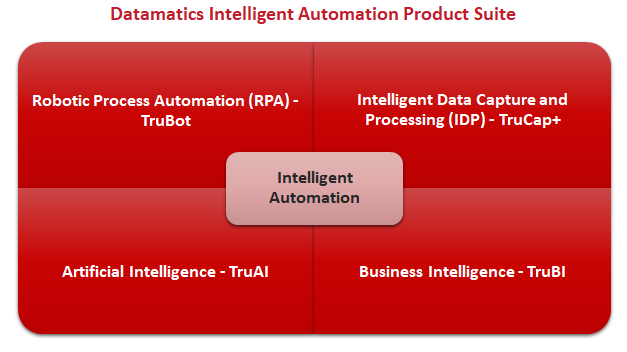Driving agility with intelligent automation
by Saurabh Sharma, on Aug 30, 2020 11:29:11 PM
RPA delivers non-invasive integration for business users
Automation is among the top priorities for the enterprise IT agenda in 2020 and the COVID-19 pandemic has forced enterprises to look for opportunities to automate for business continuity planning and operational agility, and to “do more with less”. Gartner estimates RPA software to be the fastest-growing enterprise software segment, growing at 63.1% and 62.9% in 2018 and 2019 respectively. In simpler terms, RPA software functions as a toolkit to enable the rapid configuration and subsequent management of software robots for the automation of rules-driven structured processes ("if this, then that”-style process execution).
The task automation aspect of RPA can be thought of as presentation layer automation that mimics the steps of a rules-driven structured process to perform "prescribed" functions in a scalable way. RPA when applied to the right processes enables enterprises to achieve key objectives, including elevated customer/user experience (CX/UX), legacy integration, faster return on investment (RoI) and cost savings, process digitization, and straight-through processing (STP) or a greater degree of process automation. While APIs and integration platform-as-a-service (iPaaS) solutions are used for deep integration with a range of applications and enterprise information assets, RPA enables non-invasive integration (i.e. surface automation) that can be achieved by less-skilled, business users. Even though APIs offer a robust approach to app and data integration, not every enterprise IT asset exposes an API and such a “technical” approach is often expensive and complex to implement.
Intelligent automation delivers a greater degree of process automation
Intelligent automation combines artificial intelligence (e.g., natural language processing, machine learning (ML), and computer vision) with RPA and document capture and processing capabilities. From this perspective, RPA and document processing is the “doing/execution” aspect of automation, whereas AI/ML is the “thinking” or “learning” engine of an intelligent automation system. In a nutshell, while RPA is process-driven, AI is data led. From their previous experiences of automation initiates, enterprise IT leaders have realized that automation hits a wall without digitization.

Enterprises implementing RPA can face issues in extracting and processing information from documents having unstructured data (e.g., documents, emails, and attachments). While optical character recognition (OCR) helps digitize paper-based information assets, its inherent quality issues are hard to ignore (accuracy in best-case scenarios with legacy OCR is about 60%). In this context, intelligent document processing or IDP as defined by the Everest Group combines OCR, data capture, and AI/ML capabilities to automate the retrieval, interpretation, and integration of documents required for executing an end-to-end process. With the combination of these capabilities, users can build and execute intelligent automation workflows, wherein IDP is used for data ingestion and processing, RPA automates a series of tasks (or sub-processes) and AI/ML capabilities improve the strike rate and deliver error resolution.
When seen closely, such a holistic approach combines process- and data-driven approaches to automation, as the focus shifts from automating a series of tasks towards achieving end-to-end automation (or ideally, STP). As RPA enters the mainstream and consumer-grade UX with graphical approach to development of automation flows gains popularity, the barriers to adoption are significantly lowered, both in terms of skills required and the total cost of ownership of automation software. Intelligent automation expands the scope and applicability to a diverse range of business processes and quite simply, increases the degree of automation that can be achieved when compared to the discrete use of RPA, IDP, and AI/ML capabilities. For this reason, it is important for enterprises to engage with strategic partners that offer comprehensive intelligent automation solutions, both in terms of the core software capabilities and required professional services. Datamatics offers TruBot, TruCap+, and TruAI products to help enterprise achieve intelligent automation at scale.
Next reading
- 5 RPA Success Stories in the Banking & Financial Services sector
- Democratize your business process automation with Robotic Process Automation (RPA)
- Expedite the Paycheck Protection Program (PPP) with intelligent RPA
- Complement RPA with Intelligent Data Capture for total automation
- How Artificial Intelligence transforms the Robotic Process Automation landscape to make it more productive

















